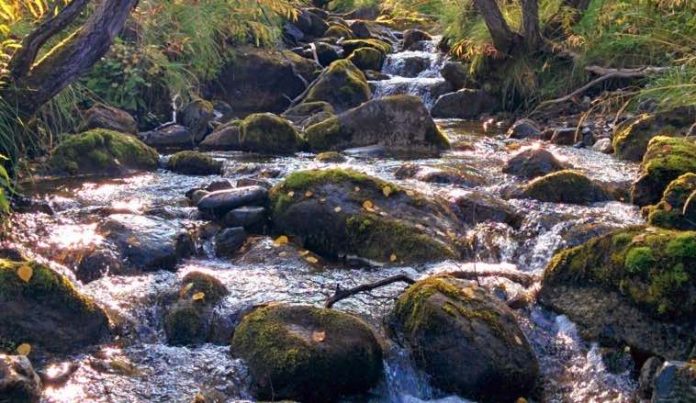The interplay between the terrestrial carbon cycle and emissions of carbon dioxide from streams and rivers into the atmosphere is at the center of a new Yale School of the Environment-led study aimed at calculating the amount for the global carbon emissions budget.
The study by a team of researchers co-authored by YSE Professor of Ecosystem Ecology Peter Raymond and published in PNAS compiled 5,910 direct measurements of fluvial CO2. Globally, the magnitude of stream and river CO2 emissions is affected by seasonal changes, watershed biogeochemistry and hydrology. Global estimates of the flux were uncertain. Co-authors include Shaoda Liu, a YSE postdoctoral associate, Catherine Kuhn ’15 MESc, Kelly Aho ’15 MESc, David Butman ’12 PhD and postdoctoral researcher, and researcher Guiseppe Amatulli.
“This study demonstrates that there is more CO2 coming out of streams and rivers in places where terrestrial landscapes are fixing more carbon,’’ says Raymond. “It furthers our understanding of important connections in the global carbon budget between terrestrial and aquatic ecosystems.”
The study builds on Raymond’s research published in 2013 that developed the first global map of the surface area of water bodies and their carbon emissions. But in 2013, there were no on-site direct measurements, and the calculations were based on alkalinity and pH and other data, Raymond explains.
“We’re starting to tone down the uncertainty,’’ he says. “And that’s a testament to the folks in the field taking the measurements now.”
The study found that monthly emissions fluxes vary more in the Arctic and northern temperate rivers than in tropical and southern temperate rivers.
Its findings highlight the importance of hydrology in water’s role in routing terrestrial carbon to the atmosphere via global drainage networks.
“The amount of carbon moved and respired by the Earth’s rivers affects the balance between Earth’s terrestrial biosphere, the ocean and the atmosphere. Our work highlights the importance of terrestrial hydrology in determining where and when rivers move a large amount of terrestrial biosphere carbon into the atmosphere’’ says Liu, who is also an assistant professor at Beijing Normal University.
The amount of terrestrial CO2 that gets stripped into streams and rivers and then emitted into the atmosphere is modulated by river discharge, the study found.
“We are really interested in this connectivity, and we’d like to understand how variability and hydrology creates differences in this connectivity. That becomes important for the chemistry of streams and rivers in particular,’’ he says.
Climate change and human impact will also play a role in the terrestrial carbon cycle and emissions from streams and rivers as some areas get dryer and other areas become wetter.
“An area of future research will be determining the anthropogenic component of this flux. It’s currently unknown,” Raymond says.















